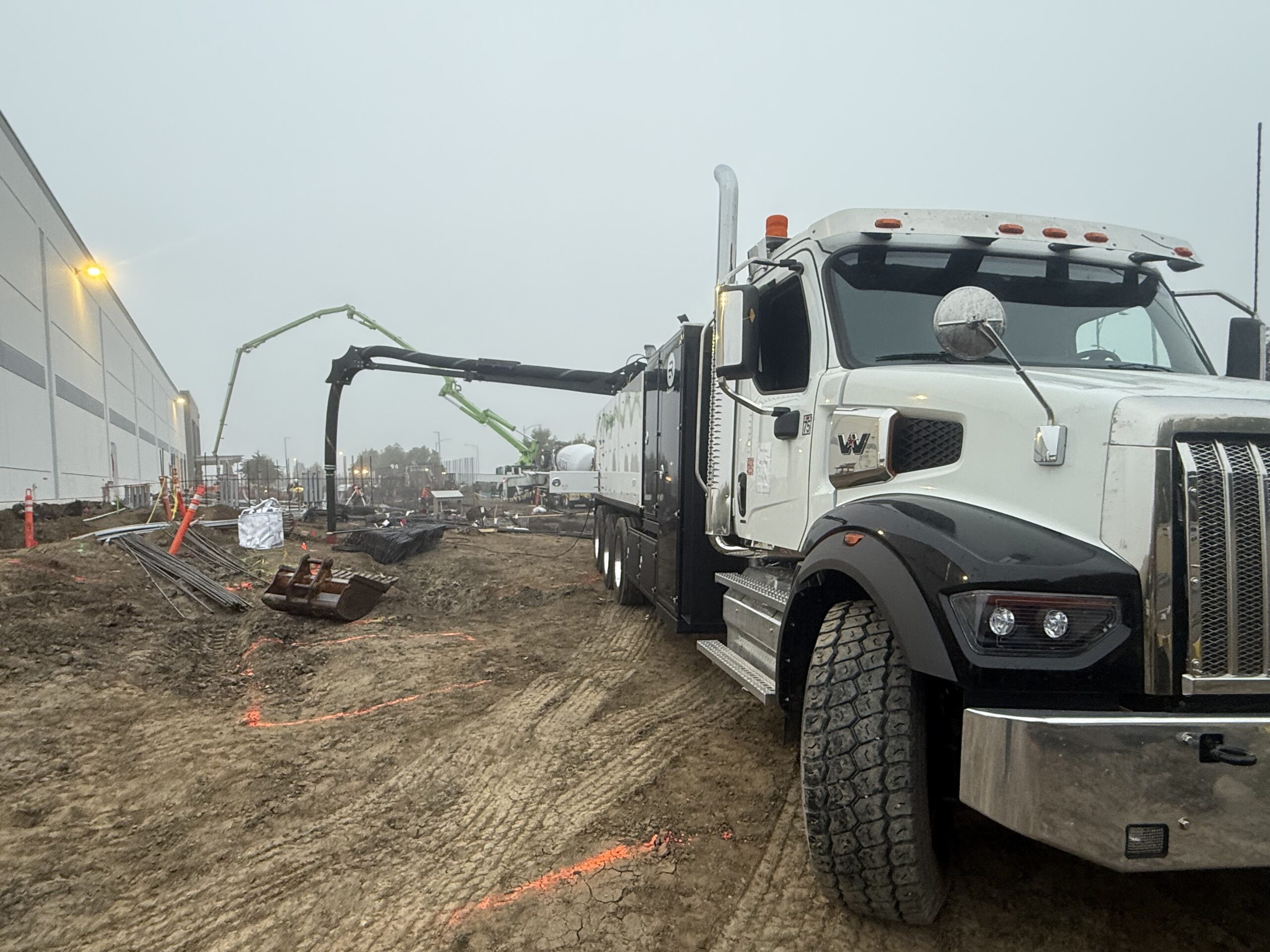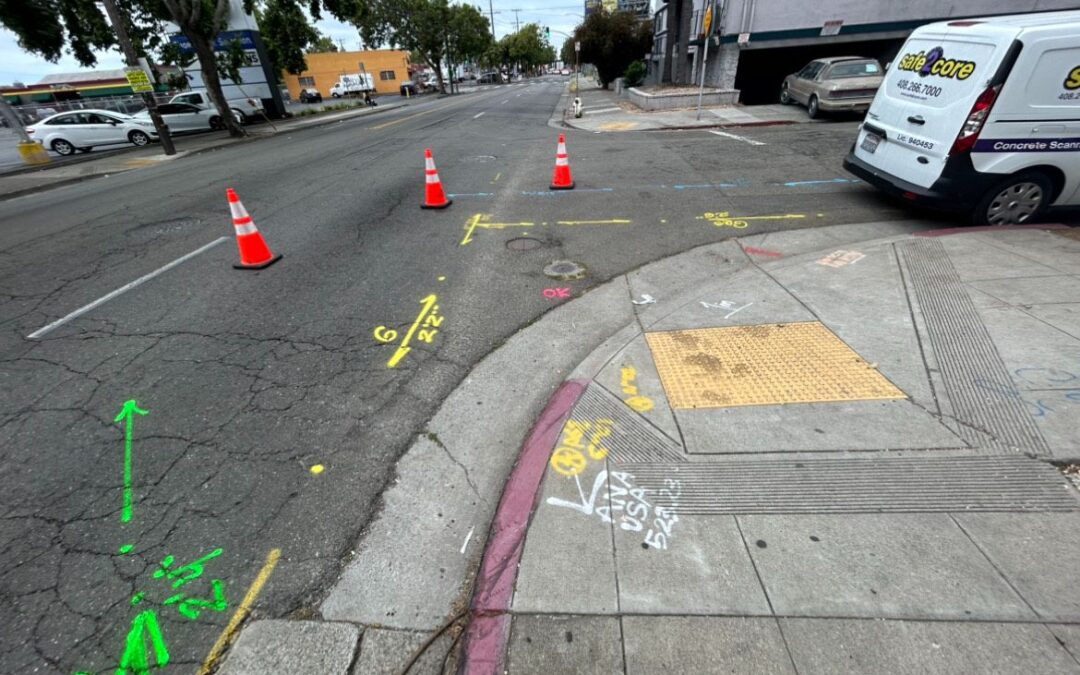When property owners or construction company personnel call locator services through a special number, usually 811, the locations of public utility lines, which are owned and maintained by the public utilities themselves, are marked by state technicians using flags, paint or other appropriate indicators with color codes according to the type of utility in a given location or area. Avoiding costs associated with careless excavation is a necessary step in damage prevention to buried utility lines, as well as increasing safety and reducing the risk of construction operations, and has a high degree of accuracy. Plus, calling someone to locate underground utilities on your job site before your construction company starts work is just the responsible thing to do, and 811 does this part free of charge.
But there is a catch.
When you call public utility locator services operated by the state, underground private utilities are typically not marked.
This can lead you to a false sense of security and a big headache later, when your personnel strike a buried utility line you didn’t know was there to protect or avoid. To ensure private underground utility lines aren’t damaged, you need a private utility locating company like Safe2Core! Private Utility Locating from Safe2Core!
What are some examples of private utility lines? And why call a utility locating company to map utility lines location when I already had it done by 811?
A public utility line delivers service of that utility to a given area, such as primary lines and mains. These underground utilities are maintained by the public utility company responsible for them. Private utilities are normally behind the meter which serves a specific house, building or lot. Normally you’ll find these lines located behind the property boundaries. Public utility locator services do not normally provide underground locators for private utilities, and locating underground utilities is not usually included in the utility mapping services the state provides.
Private utility lines may include:
- Electric lines
- Natural gas mains
- Sewer lines
- Water lines
- Communications lines such as phone, cable and Internet
- In-ground sprinkler systems
- And more.
Understanding the difference between public and private underground utilities, and calling the right utility locating companies for the job, can make the difference between a successful project and a disaster which makes the evening news for all the wrong reasons.
Often times when people are searching for private utility locating, they are using the following search terms;
locating
private
private locating
private utilities
private utility
privately
utilities
utility
utility locating
The primary question to ask here is, “What underground utilities don’t you know about, and how much downtime could not having them located cost your project?”
Is there any kind of private utilities that can’t be located?
Generally, private underground utilities incorporating plastic and PVC conduits and pipes without metallic tracer wire or ribbon, which give the conduit a reflective signature and facilitate location, are more difficult to accurately locate. Tracer wires are a relatively new invention and are commonplace in newer construction (ca. post-2004), meaning older utility installations may not have them.
However, “hard to locate” is not the same as “cannot be located,” although some underground private utility locating companies would tell you otherwise.
Advances in ground penetrating radar (GPR) have made it far easier and more efficient for trained technicians to locate underground utilities including so-called “unlocatable” utilities, such as gas lines, which in the absence of fire don’t have a detectable electromagnetic or thermal signature. Ground penetrating radar systems are commonly used for:
- Locating underground utilities
- Subsurface utility engineering and planning
- Concrete scanning
- Sanitary and storm sewer inspection and location
- Underground facilities location and planning
- Creating comprehensive underground private utility maps
- Facilitating CCTV pipe inspections and vacuum excavation operations
- And other purposes.
GPRS is safe, effective and generally takes less time than other methods for underground utility locators, depending upon the density and type of material the radar system is attempting to penetrate.
Each Safe2Core GPR technician undergoes extensive training to safely and accurately find unmarked or unknown utilities. Once a technician locates a utility, they trace the line back to its source and note the location of the line, allowing property owners and construction managers to determine the best course of action for working in the area in a safe manner. These underground locators can be helpful for planning traffic control and work operations while allowing to work to continue as expeditiously as possible.
Safe2Core is proud of the role we play in private utility locating and our partnerships with both public and private construction and property ownership entities.
We serve almost all of the American west, from Texas to California. For all your private locating and noninvasive testing and inspection needs, we invite you to follow us on Facebook and LinkedIn. Click here to request an estimate for your next private utility locating project!
Frequently Asked Questions About Private Utility Locating
Question: How does ground penetrating radar (GPR) aid in private utility locating? –Norine, Austin, TX
Answer: Ground penetrating radar systems send radio pulses into the ground. Because objects and substances beneath the surface reflect these waves at different rates, they show up on the radar as anomalies against the surrounding material. Using the utility maps generated by the GPRS in conjunction with construction drawings and documents, a private underground utility locating company can identify utility line presence to help with damage prevention and to assist with planning buildings and parking lots, subsurface utility engineering, pipe inspections and other work such as:
- Sewer inspection
- CCTV pipe inspection
- Traffic control
- Vacuum excavation
Question: When are locates for private utility lines required? –Jack, Phoenix, AZ
Answer: If you’re doing any excavation or improvement on private property, you should have any underground private utility lines located before you commence work. Underground utility locators can help identify:
- Electric lines
- Sewer lines
- Water lines
- Gas lines
- Underground facilities
Underground private utility locating companies mark out the utilities your public utility company won’t. Because of this, private locating is an important part of modern construction and can save you a lot of time and money!
Question: Can GPRS determine what type of utility it’s picked up? –Jeff, Bullhead, AZ
Answer: In terms of saying, “Oh, this is a gas main” or “This must be a water line,” not exactly. Ground penetrating radar picks up differences in density between a given object and the surrounding material. In concrete, GPR can tell you something straight lines of a very dense material are present, and those straight lines form a grid pattern. However, it takes a human mind and eyes, plus some knowledge of what’s expected to be in the material, to see that grid pattern of dense material and know you’re looking at a rebar mat.
The same basic principle applies with private utility locating. By tracing a line back to its origin, usually at a meter or storm drain, we can tell you for certain something is there, and that something is most likely a gas line or your home’s water main, for example.
Private Utility Locating
- locating
- locator
- locators
- marking
- private
- private locating
- private locator
- private locators
- private utilities
- private utility
- private utility locating
- private utility locator
- private utility locators
- privately
- utilities
- utility
- utility locating
- utility locator
Utility Locating
Question: How much does private utility locating cost? –Marcus, Oakland, CA
Answer: This depends on several factors, including:
- The size of the area where location is needed. A quarter-acre single-family house lot will take much less time than a four-acre industrial complex.
- How well-marked and mapped an existing utility lines are. Verification always takes less time than investigatory utility locating.
- The density of the material the GPRS has to penetrate. Denser materials usually take more time.
Leaving all that to one side, we can say with confidence that having private utility locating operations completed before you start your project will certainly cost you a lot less than having to repair or replace a ruptured gas main or breaking a fiber optic line! To learn more, click here to request an estimate!
People searching for Private Utility Locating will often use;
- locating
- private
- private locating
- private utilities
- private utility
- private utility locating
- privately
- utilities
- utility
Question: Who is responsible for damages to private utility lines during construction? –Berniece, New Braunfels, TX
Answer: With the understanding that we are not lawyers and this does not constitute legal advice, the person, company or entity doing the excavating or construction would usually be liable for any damage to utility lines. Reputable contractors are licensed, insured and bonded, and will use both the call before you dig services and have private utility locating done prior to starting work to minimize the risk of damage, injury or death caused by impacting such lines.
Question: What colors indicate which lines in private utility locating? –DeWayne, Austin, TX
Answer: The US and Canada utilize a standardized color scheme for marking underground utilities when their purpose is known. These utilities may be marked with flags, appropriately colored survey stakes or other markers adhering to these color codes, although flags are the most common. The markers are placed along the line of the utility.
- Red indicates electrical lines.
- Orange indicates telecommunication or cable lines or conduits.
- Yellow indicates natural gas, petroleum or other flammable materials.
- Green indicates sewers.
- Blue indicates potable (drinking) water lines.
- Purple is reserved for reclaimed water and irrigation.
- Pink indicates an unknown facility or utility. “Something’s there, we just can’t figure out what.”
- White indicates a proposed excavation route, or marks out the boundaries of same.
Question: In underground private utility locating, how do you know which lines you’ve found? –Kwantrice, San Diego, CA
Answer: There are several ways to determine the type of utility, some more accurate than others.
The easiest method is to verify the location against the proposed and as-built site drawings and other documentation. Modern construction uses GPS to give the precise location, depth and elevation of lines, making locating these utilities simple. In this case, the GPRS is more of a confirmation tool than anything. Even with this certainty, caution and care should be exercised in excavating in the area to prevent damage to the lines and safety hazards to workers and the general public.
A somewhat less reliable but still valid method is to backwalk the line to its source, usually a main, meter or box. If a given line ends at a power meter, it’s a reasonably safe bet that you’re standing over an electrical line.
The third method is evaluating the line based on depth. Sewer lines are always placed lower than drinking water lines, to prevent contamination, while electrical lines are normally placed nearer the surface to prevent water from a broken pipe to infiltrate the conduit and cause a power outage or electrical fire.
In a perfect world, all these methods would be available at the same time, making utility location much simpler. However, in older construction or utility installation which might not have been properly installed, drawings or other relevant documentation may be inaccurate or simply unavailable. This is why you should contact Safe2Core for your private utility locating needs!







